About the Frontispiece Engravings
The 145 illustrations in this collection have been scanned from the roughly 1800 19th century play scripts in the University of Washington School of Drama library. The scripts, most more than one hundred years old are extremely fragil and the scanning was undertaken primarily as a salvage operation. The project is deeply endebted to librarian Liz Fugate for her assistance and guidance in the scanning process.
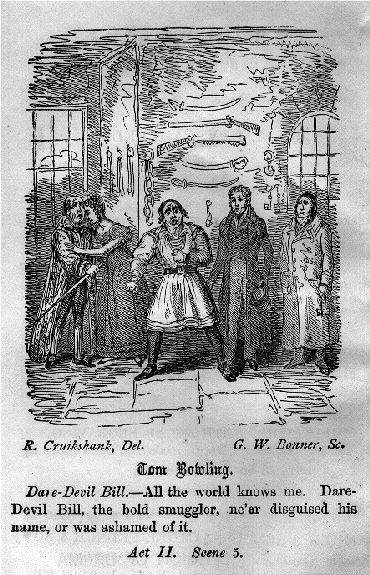
|
This is a very eclectic and therefore problematic collection of illustrations.
Many of these scripts are clearly "throw-aways," intended as keepsakes, reminders of the entertainment. As such they often contain scenes intended to evoke moments in the play. Many of the images, such as the one to the left, purport to illustrate the moment a specific line in the play is uttered. Some are said to be "drawn during representation." The challenge these present is to determine their accuracy of illustration: can they be trusted for their depiction of scenery and costume? Can we use them to further our understanding of 19th century staging? The engravings fall into roughly four groops, epitomized by these examples. There is nothing in the 1830 Robert Cruikshank drawing at left, engraved by G.W. Bonner, that signifies its specificity: it could belong to many of the plays in the collection with a nautical theme. Robert Cruikshank's delightful illustration at right -- one of eight for Samuel Foot's 1763 farce "The Mayor of Garrett," performed at Haymarket in the 1820s -- begs the question whether the costumes or scenery are derived from the actual performance or from Cruikshank's rich artistic imagination. Although none so extreme as this example, there are several illustrations among the frontispieces that show an illustrators penchent for exaggeration and caricature. |
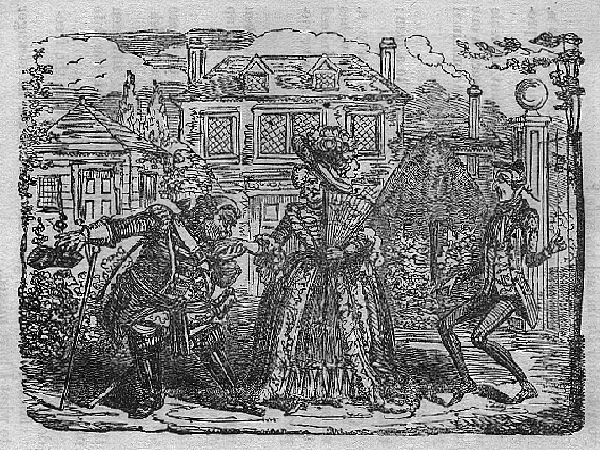
|
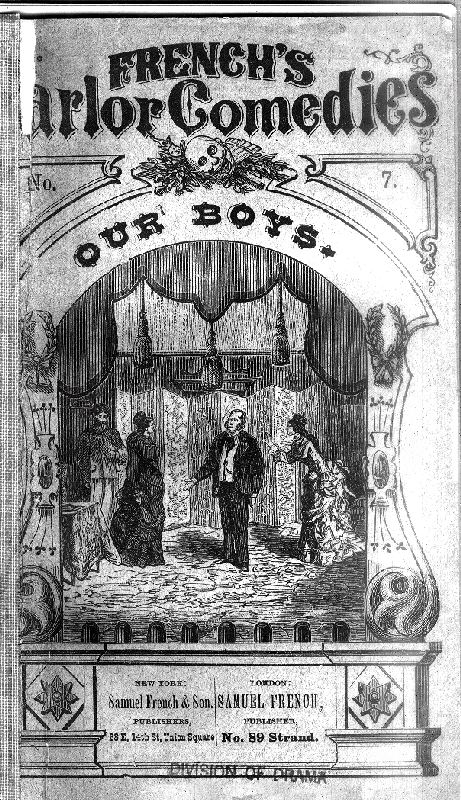 |
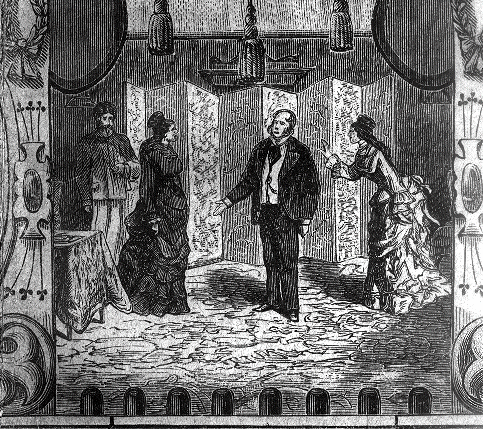
The cover illustrations, a sample shown here at left, are often quite elaborate and detailed, an enticement to purchase the play book. As we see in the detail above, the artist has used footlights to indicate the theatrical nature of ths scene. Folded screens provided a backdrop for the scene, with a pediment upstage of the screens suggesting a scene beyond. The costumes are depicted in great detail as well. Finally, there are a number of studies of popular actors and actresses. Some, like the illustration in Annals of the Edinburgh Stage at the right, show costumed actors identified by name, identified with roles for which they were well known. |
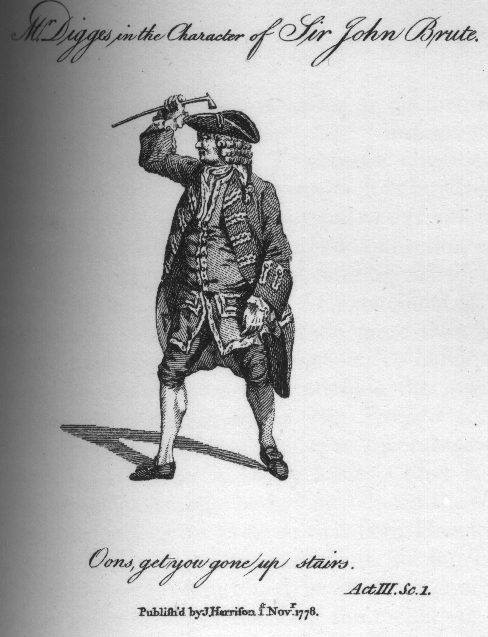
An illustration from James Dibdin's Annals of the Edinburgh Stage, 1888 |
The illustrations and the databases that accompany them are available to any researcher who wishes to work with them. Contact me at and I will send them to you on a flash drive.
©Jack Wolcott 2020
Last revised 6/22/2020


